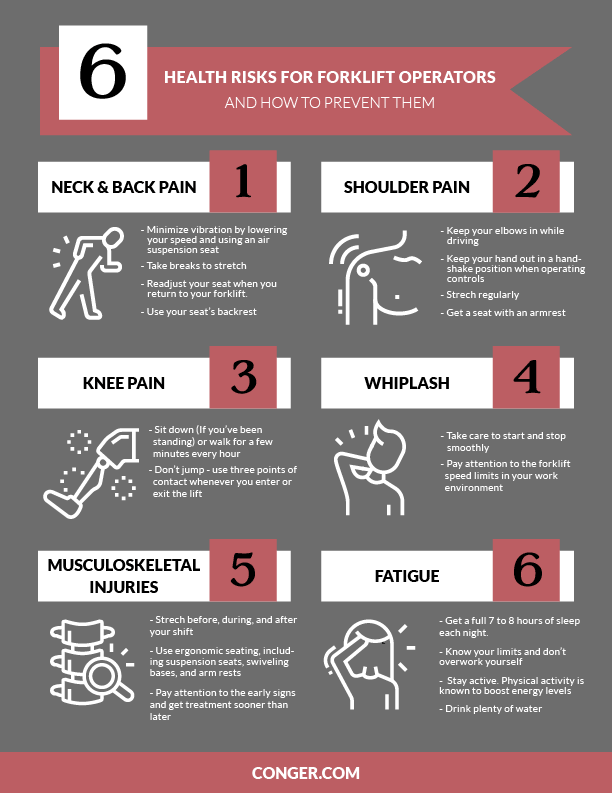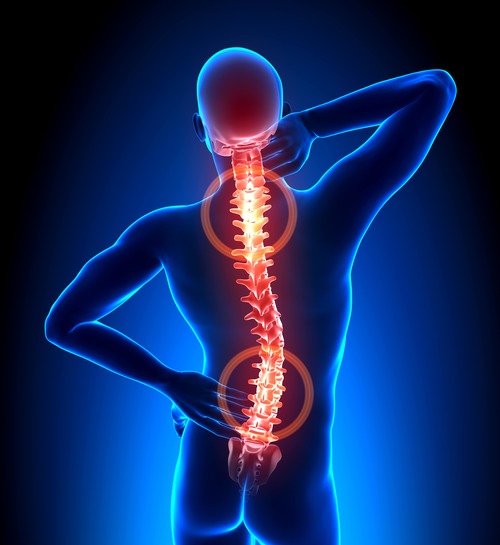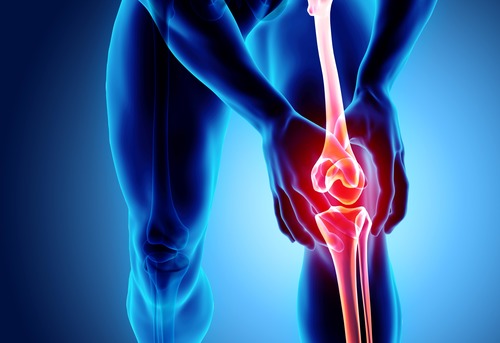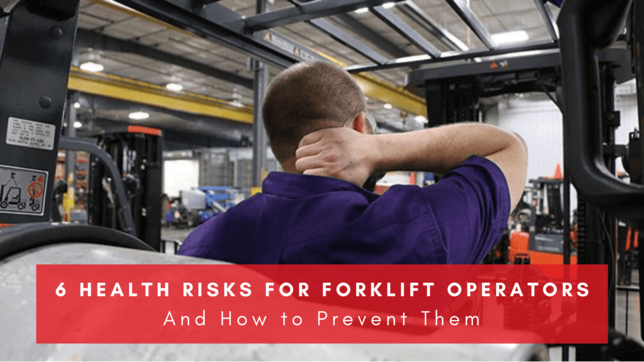This article is all about the health risks forklift operators face on a daily basis.
Between long shifts, sitting for hours at a time in a cramped cab, and twisting and craning your neck to see behind you, you’ve no doubt experienced some side effects from driving a forklift.
That’s why we asked Dr. Chad Hoffman from Lifestyle Chiropractic, in Green Bay, Wisconsin for his expert advice on what you can do to minimize the health impacts of driving a forklift.
Let’s dig in.

Neck and back pain is often directly related to your work environment.
It can also result from any poor habits you may have picked up along the way.

A few causes of your pain could be whole body vibration, sitting for long periods, and poor posture.
WHOLE BODY VIBRATION
Whole-body vibration is the vibration, shaking or jolting of the body transmitted through a supporting surface.
In this case, vibration is transmitted from your forklift seat, floor or back rest.
And it can make you predisposed to back pain or aggravate existing back problems.

To avoid whole-body vibration injuries:
-
Lower your speed
-
Use an air suspension seat, as they decrease the vibration transferred to your body
-
Minimize your travel over uneven surfaces
SITTING FOR LONG PERIODS
Sitting for long periods may be unavoidable as a forklift operator.
Plus, twisting often in your seat can cause strain to your muscles.
To alleviate issues caused by sitting for long periods of time:
-
Take breaks to stretch. Simple stretches that can be done on the job will do
-
Readjust your seat when you return to your forklift. Your feet should rest comfortably and you should be able to easily reach the steering wheel, pedals and hydraulic controls
-
Use your seat's backrest to take pressure of your back
POOR POSTURE
Poor posture can sneak up on you when you’ve been sitting in the same position for hours.
To combat poor posture:
-
Avoid slumping forward to reach the controls
-
Remove your wallet from your back pocket. Your back will adjust for the uneven seating surface, causing you to strain
Your muscles can get stiff and sore thanks to the amount of time you spend on a forklift.
Steering, operating the hydraulic controls, and repetitive motion can cause strain in your shoulders.

Keep these tips in mind to avoid muscle fatigue and shoulder pain:
-
Keep your elbows in while driving
-
When operating your controls try to keep your hand out in a handshake position rather than palm down
-
Stretch regularly
-
Ask about getting a seat with an armrest – it can help protect your shoulders
Forklift operators that drive stand-up forklifts can often experience knee pain.
Simply standing for a long time puts pressure on your lower body.
When you’re also bracing yourself against the movement of the forklift, the pressure and strain increases.
For operators of sit-down forklifts – anytime you twist around, you can also be stressing your knees.

Take care of your knees and avoid pain by:
-
Using a knee brace
-
Sitting down (if you’ve been standing) or walk for a few minutes every hour
-

 ENGLISH
ENGLISH  简体中文
简体中文
